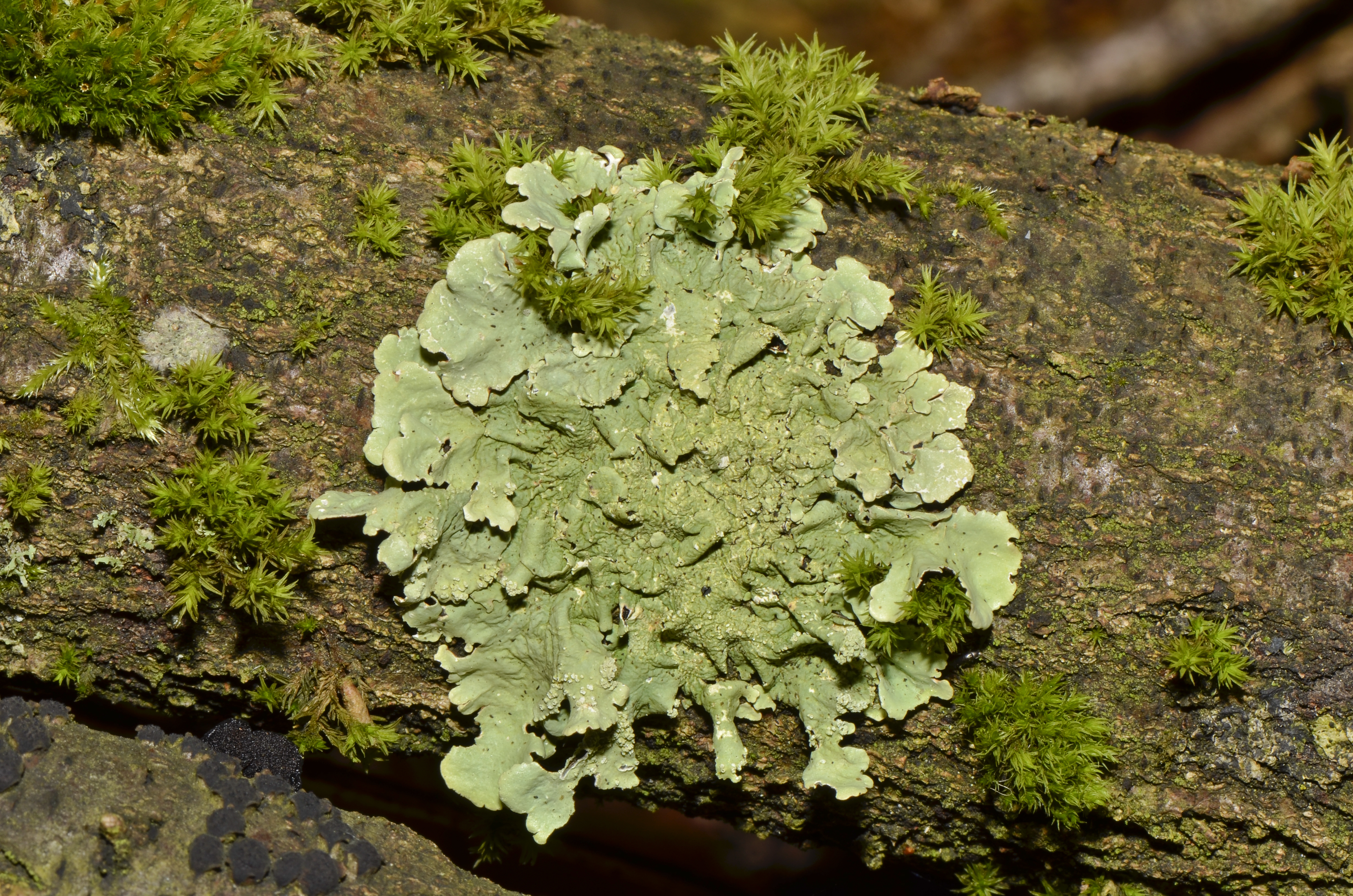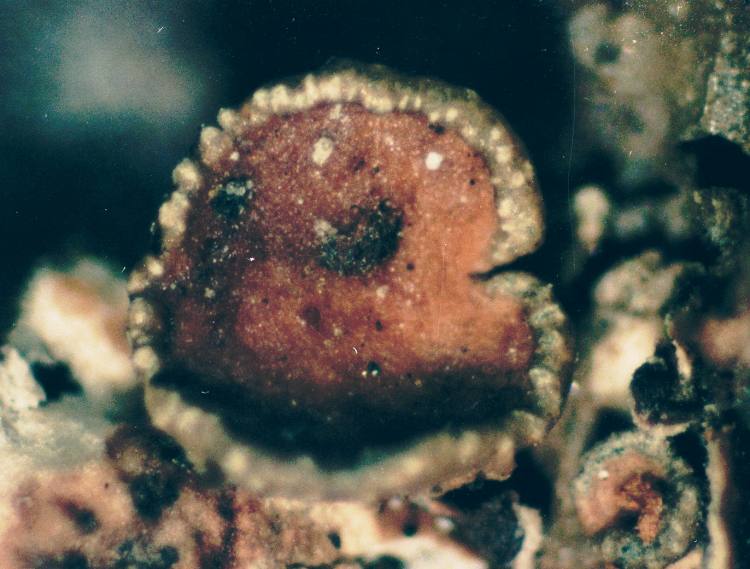|
Melanohalea Nilgirica
''Melanohalea nilgirica'' is a species of foliose lichen in the family Parmeliaceae. Found in India, it was described as a new species in 2005 by lichenologists Pradeep Divakar and Dalip Kumar Upreti. The type was collected from the Nilgiri Hills in Tamil Nadu, at an elevation of . Its thallus is about in diameter, with a reddish-brown to dark brown upper surface. It is characterized by flat, dot-like pseudocyphellae that are flush with the lobe surface, white capitate soralia, and presence of caperatic acid. This is the only known occurrence of this compound in the genus ''Melanohalea ''Melanohalea'' is a genus of foliose lichens in the family Parmeliaceae. It contains 30 mostly Northern Hemisphere species that grow on bark or on wood. The genus is characterized by the presence of pseudocyphellae, usually on warts or on ...''. References nilgirica Lichen species Lichens described in 2005 Lichens of India Taxa named by Pradeep Kumar Divakar Taxa named by Dal ... [...More Info...] [...Related Items...] OR: [Wikipedia] [Google] [Baidu] |
Dalip Kumar Upreti
Dalip Kumar Upreti (born 26 January 1958) is an Indian lichenologist.ENVIS Centre on Floral Diversity: Dr. D.K. Upreti (accessed 30 March 2014) He served as Director and Chief Scientist at CSIR-National Botanical Research Institute, during 1988 to 2017. Also he served as Head of Lichenology and division. Presently he is serving as CS ... [...More Info...] [...Related Items...] OR: [Wikipedia] [Google] [Baidu] |
Foliose Lichen
Foliose lichen is one of the morphological classes of lichens, which are complex organisms that arise from the symbiotic relationship between fungi and a photosynthetic partner, typically algae. This partnership allows lichen to live in diverse climates that can range from cold, dry mountains to wet, warm valleys. Lichens develop quite slowly with recorded growth rates of 0.01–27mm/year depending on the species. Their lifespan averages between 30 and 60 years. Lichens have a main body part called the thallus, which is composed of hyphae, and houses the cortex and medulla. The cortex contains the photosynthetic cells while the medulla allows for gas exchange and makes up the bulk of the lichen's thallus. There are three main types of lichens: crustose, foliose, and fruticose. Foliose lichen are characterised by flattened leafy thalli, and an upper and lower cortex. Many have numerous layers, which are stratified, and aid in identifying different types. Foliose lichens attac ... [...More Info...] [...Related Items...] OR: [Wikipedia] [Google] [Baidu] |
Parmeliaceae
The Parmeliaceae is a large and diverse family of Lecanoromycetes. With over 2700 species in 71 genera, it is the largest family of lichen-forming fungi. The most speciose genera in the family are the well-known groups: '' Xanthoparmelia'' ( 822 species), '' Usnea'' (355 species), ''Parmotrema'' ( 255 species), and '' Hypotrachyna'' (262 species). Nearly all members of the family have a symbiotic association with a green alga (most often '' Trebouxia'' spp., but '' Asterochloris'' spp. are known to associate with some species).Miadlikowska, J. ''et al.'' (2006). New insights into classification and evolution of the Lecanoromycetes (Pezizomycotina, Ascomycota) from phylogenetic analyses of three ribosomal RNA- and two protein-coding genes. ''Mycologia'' 98: 1088-1103. http://www.mycologia.org/cgi/reprint/98/6/1088.pdf The majority of Parmeliaceae species have a foliose, fruticose, or subfruticose growth form. The morphological diversity and complexity exhibited by this group ... [...More Info...] [...Related Items...] OR: [Wikipedia] [Google] [Baidu] |
Species Description
A species description is a formal description of a newly discovered species, usually in the form of a scientific paper. Its purpose is to give a clear description of a new species of organism and explain how it differs from species that have been described previously or are related. In order for species to be validly described, they need to follow guidelines established over time. Zoological naming requires adherence to the ICZN code, plants, the ICN, viruses ICTV, and so on. The species description often contains photographs or other illustrations of type material along with a note on where they are deposited. The publication in which the species is described gives the new species a formal scientific name. Some 1.9 million species have been identified and described, out of some 8.7 million that may actually exist. Millions more have become extinct throughout the existence of life on Earth. Naming process A name of a new species becomes valid (available in zo ... [...More Info...] [...Related Items...] OR: [Wikipedia] [Google] [Baidu] |
Type (biology)
In biology, a type is a particular wiktionary:en:specimen, specimen (or in some cases a group of specimens) of an organism to which the scientific name of that organism is formally attached. In other words, a type is an example that serves to anchor or centralizes the defining features of that particular taxon. In older usage (pre-1900 in botany), a type was a taxon rather than a specimen. A taxon is a scientifically named grouping of organisms with other like organisms, a set (mathematics), set that includes some organisms and excludes others, based on a detailed published description (for example a species description) and on the provision of type material, which is usually available to scientists for examination in a major museum research collection, or similar institution. Type specimen According to a precise set of rules laid down in the International Code of Zoological Nomenclature (ICZN) and the International Code of Nomenclature for algae, fungi, and plants (ICN), the ... [...More Info...] [...Related Items...] OR: [Wikipedia] [Google] [Baidu] |
Nilgiri Hills
The Nilgiri Mountains form part of the Western Ghats in northwestern Tamil Nadu, Southern Karnataka, and eastern Kerala in India. They are located at the trijunction of three states and connect the Western Ghats with the Eastern Ghats. At least 24 of the Nilgiri Mountains' peaks are above , the highest peak being Doddabetta, at . Etymology The word Nilgiri, comes from Sanskrit word ''neela'' (blue) + ''giri'' (mountain), has been in use since at least 1117 CE. In Tamil literature it is mentioned as ''Iraniyamuttam'' It is thought that the bluish flowers of kurinji shrubs gave rise to the name. Location The Nilgiri Hills are separated from the Karnataka Plateau to the north by the Moyar River. Three national parks border portions of the Nilgiri mountains. Mudumalai National Park lies in the northern part of the range where Kerala, Karnataka, and Tamil Nadu meet, covering an area of 321 km². Mukurthi National Park lies in the southwest part of the range, in Kerala ... [...More Info...] [...Related Items...] OR: [Wikipedia] [Google] [Baidu] |
Tamil Nadu
Tamil Nadu (; , TN) is a state in southern India. It is the tenth largest Indian state by area and the sixth largest by population. Its capital and largest city is Chennai. Tamil Nadu is the home of the Tamil people, whose Tamil language—one of the longest surviving classical languages in the world—is widely spoken in the state and serves as its official language. The state lies in the southernmost part of the Indian peninsula, and is bordered by the Indian union territory of Puducherry and the states of Kerala, Karnataka, and Andhra Pradesh, as well as an international maritime border with Sri Lanka. It is bounded by the Western Ghats in the west, the Eastern Ghats in the north, the Bay of Bengal in the east, the Gulf of Mannar and Palk Strait to the south-east, and the Indian Ocean in the south. The at-large Tamilakam region that has been inhabited by Tamils was under several regimes, such as the Sangam era rulers of the Chera, Chola, and Pandya c ... [...More Info...] [...Related Items...] OR: [Wikipedia] [Google] [Baidu] |
Thallus
Thallus (plural: thalli), from Latinized Greek (), meaning "a green shoot" or " twig", is the vegetative tissue of some organisms in diverse groups such as algae, fungi, some liverworts, lichens, and the Myxogastria. Many of these organisms were previously known as the thallophytes, a polyphyletic group of distantly related organisms. An organism or structure resembling a thallus is called thalloid, thallodal, thalliform, thalline, or thallose. A thallus usually names the entire body of a multicellular non-moving organism in which there is no organization of the tissues into organs. Even though thalli do not have organized and distinct parts ( leaves, roots, and stems) as do the vascular plants, they may have analogous structures that resemble their vascular "equivalents". The analogous structures have similar function or macroscopic structure, but different microscopic structure; for example, no thallus has vascular tissue. In exceptional cases such as the Lemnoid ... [...More Info...] [...Related Items...] OR: [Wikipedia] [Google] [Baidu] |
Pseudocyphella
Pseudocyphellae (singular ''pseudocyphella'') are structures in lichens that appear as tiny pores on the outer surface (the cortex of the lichen. They are caused when there is a break in the cortex of the lichen, and the medullary hyphae extend to the surface. Pseudocyphellae are the same colour as the medulla of the lichen, which is generally white, but can be yellow in some species of '' Pseudocyphellaria'' and in ''Bryoria fremontii''. The presence/absence, abundance, colour, and shape of pseudocyphellae can all be diagnostic features used to identify different species. They facilitate gas exchange through the surface of the lichen, and may provide an adaptive advantage in temperate In geography, the temperate climates of Earth occur in the middle latitudes (23.5° to 66.5° N/S of Equator), which span between the tropics and the polar regions of Earth. These zones generally have wider temperature ranges throughout t ... environments. References *Brodo, I. M., ... [...More Info...] [...Related Items...] OR: [Wikipedia] [Google] [Baidu] |
Soralia
Soredia are common reproductive structures of lichens. Lichens reproduce asexually by employing simple fragmentation and production of soredia and isidia. Soredia are powdery propagules composed of fungal hyphae wrapped around cyanobacteria or green algae. These can be either scattered diffusely across the surface of the lichen's thallus Thallus (plural: thalli), from Latinized Greek (), meaning "a green shoot" or " twig", is the vegetative tissue of some organisms in diverse groups such as algae, fungi, some liverworts, lichens, and the Myxogastria. Many of these organisms ..., or produced in localized structures called soralia. Fungal hyphae make up the basic body structure of lichen. The soredia are released through openings in the upper cortex of the lichen structure. After their release, the soredia disperse to establish the lichen in a new location. References Fungal morphology and anatomy Lichenology {{lichen-stub ... [...More Info...] [...Related Items...] OR: [Wikipedia] [Google] [Baidu] |
Melanohalea
''Melanohalea'' is a genus of foliose lichens in the family Parmeliaceae. It contains 30 mostly Northern Hemisphere species that grow on bark or on wood. The genus is characterized by the presence of pseudocyphellae, usually on warts or on the tips of isidia, a non-pored and a medulla containing depsidones or lacking secondary compounds. ''Melanohalea'' was circumscribed in 2004 as a segregate of the morphologically similar genus ''Melanelia''. Taxonomy ''Melanohalea'' was circumscribed in 2004 by lichenologists Oscar Blanco, Ana Crespo, Pradeep K. Divakar, Theodore Esslinger, David L. Hawksworth and H. Thorsten Lumbsch. It is a segregate of ''Melanelia'', a genus created in 1978 to contain the brown '' Parmelia'' species. The circumscription of this genus was questioned later, especially after early molecular phylogenetics studies demonstrated that it was not monophyletic. Subsequently, two genera, '' Melanelixia'' and ''Melanohalea'', were created. ''Melanohalea'' or ... [...More Info...] [...Related Items...] OR: [Wikipedia] [Google] [Baidu] |


.jpg)




